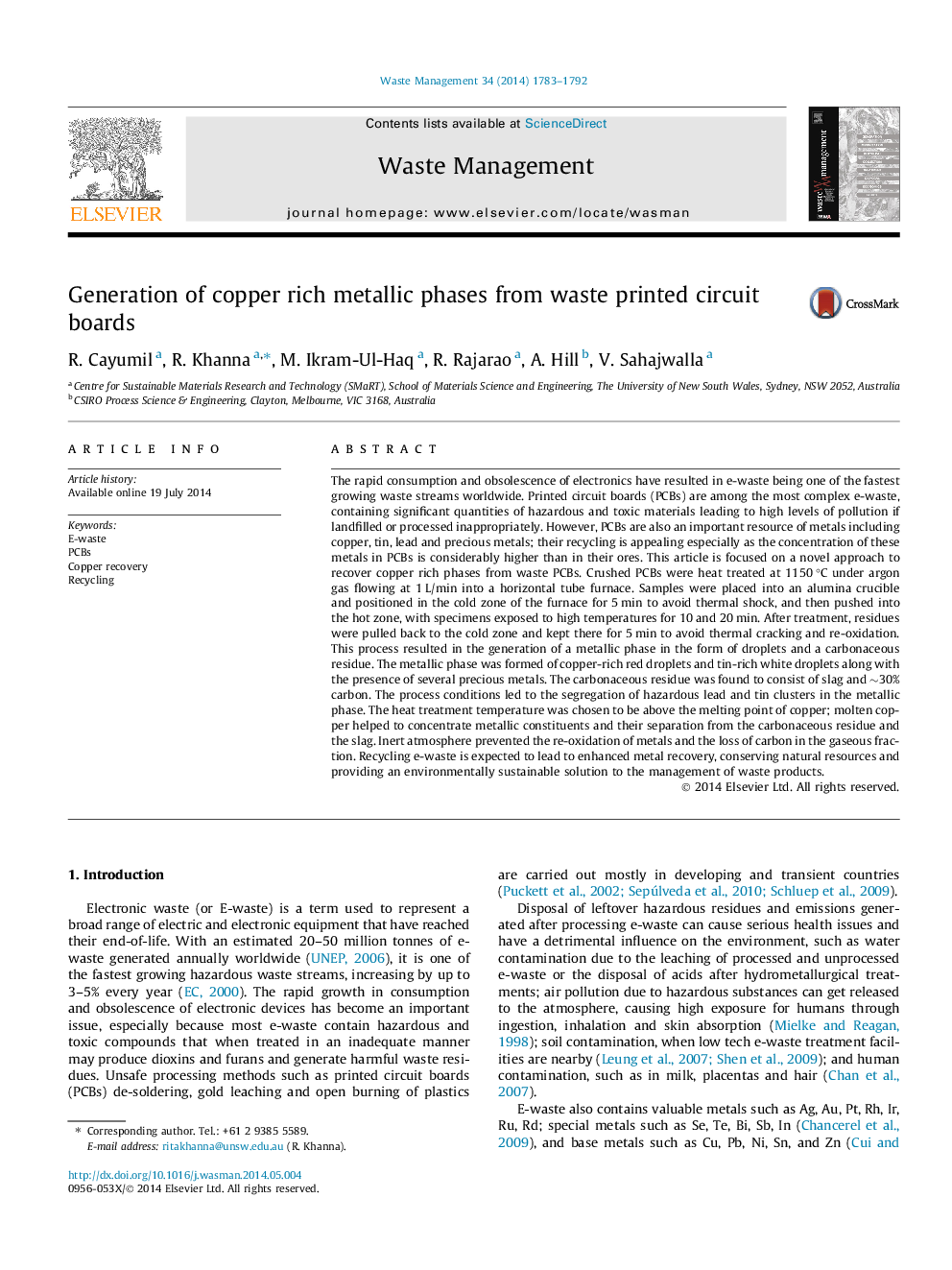| کد مقاله | کد نشریه | سال انتشار | مقاله انگلیسی | نسخه تمام متن |
|---|---|---|---|---|
| 4471519 | 1315031 | 2014 | 10 صفحه PDF | دانلود رایگان |
• Recycling and material recovery from waste printed circuit boards is very complex.
• Thermoset polymers, ceramics and metals are present simultaneously in waste PCBs.
• Heat treatment of PCBs was carried out at 1150 °C under inert conditions.
• Various metallic phases could be segregated out as copper based metallic droplets.
• Carbon and ceramics residues can be further recycled in a range of applications.
The rapid consumption and obsolescence of electronics have resulted in e-waste being one of the fastest growing waste streams worldwide. Printed circuit boards (PCBs) are among the most complex e-waste, containing significant quantities of hazardous and toxic materials leading to high levels of pollution if landfilled or processed inappropriately. However, PCBs are also an important resource of metals including copper, tin, lead and precious metals; their recycling is appealing especially as the concentration of these metals in PCBs is considerably higher than in their ores. This article is focused on a novel approach to recover copper rich phases from waste PCBs. Crushed PCBs were heat treated at 1150 °C under argon gas flowing at 1 L/min into a horizontal tube furnace. Samples were placed into an alumina crucible and positioned in the cold zone of the furnace for 5 min to avoid thermal shock, and then pushed into the hot zone, with specimens exposed to high temperatures for 10 and 20 min. After treatment, residues were pulled back to the cold zone and kept there for 5 min to avoid thermal cracking and re-oxidation. This process resulted in the generation of a metallic phase in the form of droplets and a carbonaceous residue. The metallic phase was formed of copper-rich red droplets and tin-rich white droplets along with the presence of several precious metals. The carbonaceous residue was found to consist of slag and ∼30% carbon. The process conditions led to the segregation of hazardous lead and tin clusters in the metallic phase. The heat treatment temperature was chosen to be above the melting point of copper; molten copper helped to concentrate metallic constituents and their separation from the carbonaceous residue and the slag. Inert atmosphere prevented the re-oxidation of metals and the loss of carbon in the gaseous fraction. Recycling e-waste is expected to lead to enhanced metal recovery, conserving natural resources and providing an environmentally sustainable solution to the management of waste products.
Journal: Waste Management - Volume 34, Issue 10, October 2014, Pages 1783–1792
